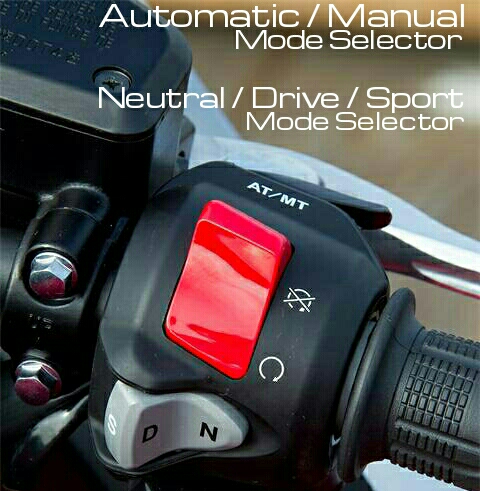junglejim
Site Supporter
Yep, I started my tractor with mine last week. I also use it for changing cell phone and GPS when on a trip.Arent those jump packs amazing?
The salesman who was demonstrating them started his semi with one.
Yep, I started my tractor with mine last week. I also use it for changing cell phone and GPS when on a trip.Arent those jump packs amazing?
No it isn't."...My 2012 NC700X has the original battery...Hondfan"
Is yours a DCT model?
There you have it...No it isn't.

I think that is a pretty good voltage range.According to Yuasa...the battery should be 12.7V after it is charged. If it is 12.5 or lower, it is on the way out. To test a battery...switch the kill switch on, put a voltmeter across the battery and crank the engine for 30 seconds. The voltage should stay between 9.5 and 10.5V.
My bikes sit from late October to the end of April. My garage is 65F year round. I think that is a major factor in battery life. I disconnect the grounds on the batteries when in storage. My charger de-sulphates, and it may catch it early when it can be controlled. I certainly do not fuss over my batteries. I have a Honda Civic with and incredible amount of electronics, and a physically small battery. I would not be surprised if that battery has a 3-4 year life span.There you have it...

As I mentioned earlier, DCT models have more DC power requirements than manual transmission models.
My maintenance logs show that the OEM Yuasa failed 3 years and 9 months after I bought the bike.
As you show, Chris, those figures are too low to be reliable for starting in cold weather. You need 12.5 at rest and 9.5 under load (when cranking)You bring up a good point. I dont have a fancy battery checker....just a resistive one with an analoge voltmeter. What would be an acceptable terminal voltage reading when the battery is under its max load (220 cca) and/or under the standard load of the vehicle starter?
As I go through my maintenance, I suspected my FJR jump pack was too long in the tooth. It was new in 3/2017. I pulled it out of the pannier and it showed 84 percent charge. It is supposed to have a start current of 300 amps. I am recharging it but I will get a new one. Under load, it fell too low. And it only took 5 min to charge to 100 percent.
Unloaded
Loaded

Exactly. I have scrapped that jump pack and its twin brother took a long time to charge up from 51 percent and checked good today. I have another on order as well as an OEM battery. Very occasionally, on tour in fact, in the high desert, I will have to start the bike below freezing. Around here in Spokane, the threat of black ice is all too real when the temps drop below freezing. In the high desert in early Fall, the air is as dry as a bone. I feel safe to ride and things warm quickly.As you show, Chris, those figures are too low to be reliable for starting in cold weather. You need 12.5 at rest and 9.5 under load (when cranking)
My original one is just a little lower than those figures (0.1-0.2V) but has been that way for a long time and has never failed to start the engine. However, we don't get the extremely low temperatures here in Melbourne that you get. It is rare to get below 3 or 4 degrees C overnight in Winter. Having said that, a couple of years ago I visited my son in Canberra and when I left the hotel in the morning the thermometer on the handle bar was showing -3.8C. The bike started instantly with the 10 1/2 year battery.
Your jump pack battery may be past it's best if it recharged in 5 minutes from 84%.
Hondafan's method of testing the battery is also valid.
Keep in mind that the Quoted Yuasa figures will be for a battery in good to very good condition, not an aged one that is still serviceable.
If the voltage under load drops too low the ECU may not turn on the injectors or coils. This is a common problem on 6 cyl Toyotas. They will spin over at normal speed because the starter motor (reduction drive) draws so little current from the battery that even an almost flat or dead battery can do it. However, if the battery voltage drops below 9 volts it will not start as the ECU say sorry mate-no fuel, no spark. Connect a jump pack or leads and it starts instantly. Many people have fallen for the trap of thinking that if it cranks it can't be the battery.
Macka
Just for fun, I checked my maintenance records for my 2004 CRV. First battery was at five years and 50,000 miles. The next battery lasted 7 years and was changed at 116,000 miles.I don't think batteries last very long in new vehicles. Our 2017 Honda CRV lasted 3 years. My 2016 F150 lasted 4 years. Neither one gets daily use and they both sit unused for a week at times. The F150 has a system on it that shuts off the heater fan when I lift the snow plow (electric over hydraulic lift) in order to keep from overloading the weak electric system.
